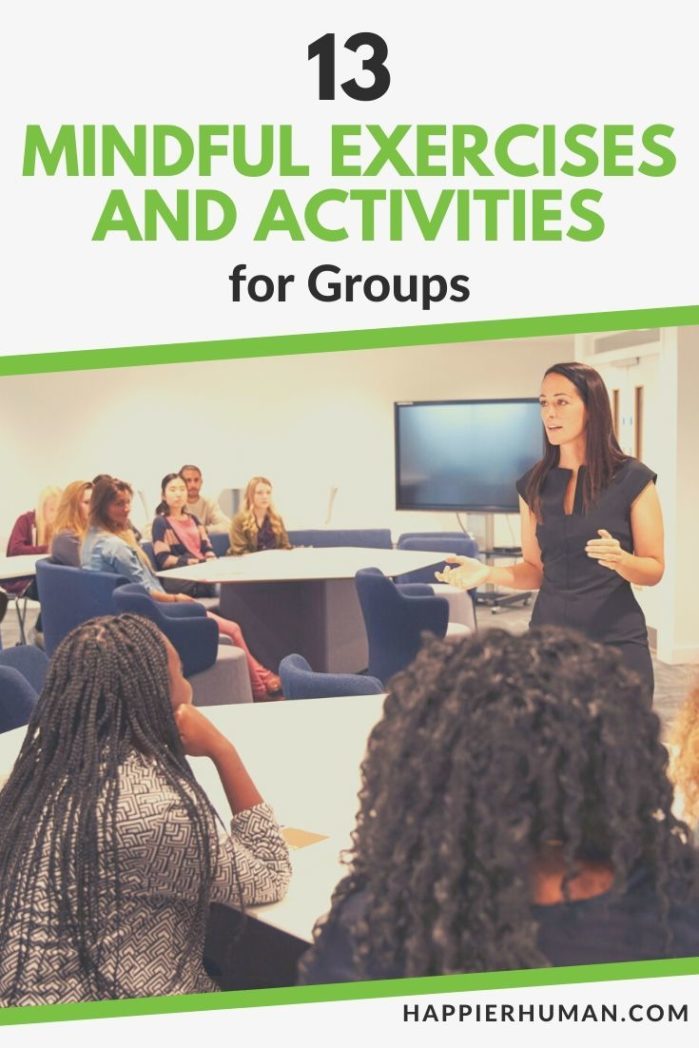Despite all of the current modern technical advances, people throughout the world are more stressed than ever, partly due to the fact that they are working harder and more than ever. An inequitable unpredictable economy and constant geopolitical realignments cause high levels of anxiety, as people feel financial pinches, loss of benefits and lack of security.
As a result, many people work multiple jobs or find themselves mired in the gig economy, all while trying to take care of their families, save money, go to school and to maintain their health. This is definitely multitasking taken to an extreme.
Stress may manifest in the body as poor sleep patterns and concentration abilities, a restless unclear mind, skin rashes, jaw clenching, teeth grinding and headaches.
Anxiety may cause an increased heart rate, sweating, nervousness, fear and sensitivity. It might seem like this is a hopeless situation, but you actually have many tools that can help you to live a happier life.
We can't control the things in our life that create stress, but we do have the power to cultivate healthy habits, and supportive personal relationships. If you want to learn how to do both at the same time, you are in the right place.
Mindfulness Can Help Your Mental Health
Stress related mental and physical illnesses also are increasing. Some of the symptoms of stress are constant anxiety, worry, tension, agitation, and irritation. Being quick to anger, to argue and to criticize are additional signs of stress.
In other instances, individuals may turn the stress inwards, blaming themselves or negatively self-talking, while others project the stress outwards, being hostile to everyone around them.
Although anxiety is a global mental health issue, it is also the most common mental illness in the United States. According to Medical News Today, forty million Americans suffer from anxiety and anxiety related disorders, but only thirty-six percent seek treatment.
When you are in such a stressed and anxious state, you might turn to friends and family for advice. Perhaps they might tell you to “relax” – “chill out” or “take time for yourself”. Maybe they suggest that you don’t worry, be happy.
Other possible options include going to the gym, taking a yoga class, seeing a counselor, quitting or changing jobs, or even improving your diet.
How Mindfulness Exercises Can Create Lasting Peace
While all of these are certainly valid suggestions, they seem somewhat trite, and aren’t actually practical.
If you are incredibly busy, always working or attending to the daily demands of life, then finding time to go to the gym or having the money to go to yoga might be difficult.
Time and money are the two biggest factors at play, and if you have neither, well then, life is truly exhausting. Caught in a rut, what can you do to give yourself some much-needed relief?

Mindfulness exercises are a great way to start. Of course, if you don’t have the time, or you put everything else before your own needs, scheduling mindfulness practice can be tricky. Therefore, it might be a great idea to do mindfulness exercises with friends or in a group.
In this way, you have an immediate support system, people who empathize and sympathize with you and your situation, because the chances are high that they have the same set of circumstances.
Make Mindfulness Work in a Supportive Group
Just as personal trainers advise having a work out partner, especially when beginning a new program, having a mindfulness partner (or partners), will motivate you not only to find the time for the practice, but also actually to perform the exercises.
It can be a fun way to make new friends, all the while you are reducing anxiety and stress.
In case you were wondering, mindfulness is the Buddhist concept of being aware of the present moment.
Rather than contemplating past events or future possibilities, or being distracted by worries and preoccupations, mindfulness calls attention to things happening in the here and now, to purposefully focus upon emotions, thoughts, surroundings, and body sensations.
In scientific tests, mindfulness based exercises were found to enhance mental health and psychological functions, to reduce stress, anxiety and worry, and to induce relaxation.
Benefits of Mindfulness to Your Life
People tend to sleep better and to feel less anxious. In individuals with certain medical problems, a mindfulness practice improved blood sugar and blood pressure, and helped decrease the discomfort of Type 2 diabetes, rheumatoid arthritis, and chronic pain.
It can even alleviate symptoms of depression.
In addition to these wonderful results, mindfulness activities were discovered to increase emotional regulation, to decreases symptoms of alcoholism, and to improve social skills.
When practiced by students, mindfulness heightened academic achievement, reduced aggressive and problem behavior, boosted the ability to cope with bullying, and encouraged resilience.
In the work place, it reduced “burnout”, augmented job performance and diminished turnover at work and dissatisfaction with work.
In all who practice it, mindfulness, “being fully awake” in your life”, allows higher brain function, positive effects on the immune system, lowered heart rate and blood pressure, mental clarity and calmness, and improved attention and focus.
If this list were not impressive enough, mindfulness can motivate people to change their lifestyles for the better, to improve physical behavior, to increase resilience, and to encourage an optimistic perspective.
13 Mindfulness Group Exercises to Try Today
Group mindfulness is as effective as group therapy, particularly cognitive behavioral therapy. In group settings, mindfulness has proven efficacy to reduce social anxiety, to target behavioral triggers and to deepen meditation practice.
These are probably the exact goals a stressed person wants to achieve, especially one on a tight budget and schedule. But how to begin? How to actually “relax” and “chill”?

Following is a list of suggested group mindfulness exercises that will help you and your friends to breathe easier.
Please note that with any practice, mindfulness takes patience and commitment, even in a group setting. Mindfulness is a process, so don’t entertain unrealistic goals of immediately mastering it. Be patient.
If your “monkey mind” wanders, gently return it to the exercise without any harsh judgment or negative words. Be kind to yourself. Remember that even if you feel shy in the group setting, there is medical research to support the efficacy as group mindfulness.
1. The Raisin Exercise
A variation on mindful eating, the raisin exercise can be done with other similar foods. The point of this exercise to bring awareness to the raisin, to be present and “discover” it.
The participants should pretend that they have never seen or tasted a raisin. In order to familiarize themselves with this strange fruit, group members must pay attention to the smallest of details and the five senses: how does it look, feel, smell, and taste. Note the consistency and surface, the shape, the dimensions, the color.
By focusing on the raisin, you are in the moment, training the mind to focus on the object in front of you, rather than worrying about the past or the future, the emails that need to be sent and the dinner that will be made later.
When you eat the raisin, chew slowly, savoring the taste. Try to describe the flavor to yourself or perhaps to others in the group. Note your mood and ascertain if there is a connection or trigger in your reaction to the chosen food.
Not only can this be the beginning of mindfulness, but also it can change your relationship with food.
2. Body Scan
This exercise requires all participants to lie still on their backs with palms facing upwards and feet slightly apart.
Although it can be considered a form of guided meditation, the body scan is directed by the group facilitator, who most likely will start the exercise by bringing awareness to the rise and fall of the breath through the movements of the stomach and lungs.
Then the focus will be redirected systematically to the body, starting at the feet and finishing with the top of the head.
Notice any places of tightness, heaviness, sensitivity, or soreness. Observe any feelings of discomfort or pain. Note the sensation of the clothing on the skin, the contours of the floor, and the temperature of both body and environment.
Once the scan is complete, participants will be asked to slowly return to the room, to open their eyes and to come to a comfortable sitting position.
3. Mindful Seeing
This is an easy exercise to cultivate imagination and observation. If you are a visual learner, then you can still gain insight through this practice. The group is situated in front of a window and asked to note as much as you can see, but rather than literally labeling everything, think in terms of color, shapes, textures, movement, and lines.
See if the rain is falling or the wind is blowing. If it helps, pretend you are someone who has never been to this city or part of the world before. Look upon the view, whether nature or city, with wonder, not criticism.
As is the case with all of these exercises, should your monkey mind distract you, then gently return to the window and start again.
4. Mindful Listening
Listening is a key tool in mindfulness, and in the development and maintenance of personal relationships. Listening validates the other person, making them feel respected. However, this exercise emphasizes stillness, while judgments and preconceptions are ignored.

Participants will be asked to think of one stressful trigger and one happily anticipated event. Then they will take turns sharing this in the group. Each person will speak about how it feels to talk, to say certain things out loud, to share with the group.
Please note the emotions and physical sensations when speaking and listening. After all participants have finished, the group will be divided into smaller groups to discuss the emotions and feelings that arose during the speaking and the listening.
Other questions include distraction, judging, empathy and kindness, but you certainly can write your own questions for the smaller group work. Learn more about mindful listening
5. Listening Exercise in pairs
An obvious variation on the above exercise, this activity revolves around pairing. Each participant is encouraged to work with someone whom they don’t know well.
For sixty to ninety seconds, one partner (Partner A) will ask the other (Partner B) person a question. Partner B should say “Thank you” and then answer the question. Then Partner A asks the same question again, and Partner B answers again, until the allotted time finishes. Then the partners will switch roles.
Some of the suggested questions include:
“What is something that makes you happy?”
“What makes you stressed?”
“What do you like about yourself?”
Feel free to create your own questions.
The point of this exercise is to foster mindful speaking and listening. When speaking, the person should note their emotions and body, and the truth of their answers and their accompanying vulnerability. The listener should be silent and really hear what the other person is revealing.
6. Beats Listening
Another manifestation of a listening exercise, this activity involves beats in a created rhythm. It is simultaneously fun and demanding, as you must pay full attention to the rhythm in order to repeat it.
The group sits in a circle and the first person makes a sound or beat. The next person repeats that sound, but adds a beat to it. This continues around the circle, with each person adding a sound or beat to the pattern. Should someone miss a beat, he or she is considered “out” and they are assigned to distract as many of the remaining players as possible.
Not only do you have to pay attention to the beat in order to replicate it, but also you must focus on it to the point of not being distracted at all. It is great practice for taming the monkey mind and developing the ability to shut out extraneous noise and thoughts, all of which are necessary skills for mindfulness.
7. Out Loud Noting
An extraordinarily easy exercise, out loud noting directs our attention to things that we can see, hear, feel and think. Sitting in a circle, the participants state what they notice at that moment.
For example: “Right now I can hear the traffic on the street”. Going around the circle, each participant states one observation, until the next round, when there will be new statements.
By speaking, you are noting things in the moment, and by listening to the other comments, you might start to see and experience different aspects not noticed before.
8. Sixth Sense Doors
Related to the above exercise, sixth sense doors is out loud noting except based on the six senses. Should you wish to omit taste and/or smell in order to simplify the activity, then it is fine.

Still sitting in that circle, the participants note what they are noticing but then name one of the six senses, such as hearing, feeling, thinking or seeing. Then the next person must also state an observation based on that sense. For example, “Currently, I am noticing my breath…feeling.”
The next person should then notice an experience or sensation based on feeling, like the weight of their clothes on the body or a pain in their knee. It directs the participants’ minds to their immediate surroundings and their interaction within those surroundings.
9. Attention Game
Perfect for children and adults, this game is significant for honing your memory.
Sitting in the circle, the first person says the name of a celebrity and the points so another person in the circle. That person must then name a celebrity whose first name starts with the first letter of the last name of the previously mentioned celebrity.
This exercise can be fast paced and fun, but please note that it can get tricky and therefore, requires your full attention, which is the whole point of the exercise: Being in the moment, paying attention and focusing the mind.
10. Guided Meditation
For those who do not know how to meditate, guided meditation can be the best tool. A simple and effective introduction to meditation, a person guiding you helps to direct the mind and relaxes the body, allowing the breath to calm and the mind to become still.
Guided meditation takes different forms, some refer to a bright light enveloping the body while others may focus on mantras, sounds, images and/or narratives. It may take multiple tries with the various types to find one that suits you.
Guided meditation can very easily be adopted to groups scenarios, including yoga classes, where there is usually a short relaxation exercise at the end of the class, when the participants are in “corpse pose”.
11. Mindfulness Bell Exercise
This exercise involves a cue in the form of a bell or chime. Often used in meditation and yoga classes to start and end a session, the bell has the ability to focus attention.
By closing your eyes and listening to the sound of the bell or chime, you should concentrate on the sound until it fades completely. This activity is great for grounding people and it can easily be applied to a group setting to signify the end of the beginning of the exercise and/or the class.
Short exercises such as this can be combined with others to fill an entire group class.
The aim of all of these activities is to start a mindfulness practice and to learn techniques. By doing them in a group setting, you will receive feedback from others who may have additional insight or different experiences than you, thus creating a more holistic approach to the practice.
12. Five Senses
Another exercised geared towards the senses and the current moment, the five senses activity directs your attention to that which you are immediately experiencing.
You must notice things in the following in order:
- Five things that you can see, preferable objects or items that you wouldn’t normally notice.
- Four things that you can feel, including the feel of the chair on your back or the clothes on your skin.
- Three things that you can hear, including birds tweeting, air conditioner running, or traffic on the street.
- Two things that you can smell, pleasant or unpleasant, like someone’s perfume or the smoke of incense.
- One thing that you can taste, which could be water or coffee, mints or chewing gum.
Although relatively simple, this exercise can bring you to a state of mindfulness relatively easy and it can be adopted to a group setting, with the teacher guiding the participants through the list. Upon completion, participants can break into pairs to discuss what they noticed, comparing with the others.

13. Leaf Observation
Another short exercise, participants will hold a leaf in their hands for five minutes and focus all of their attention on that leaf for a full five minutes. In this time allotment, people should note everything about the leaf, including the shape, texture, color, feel, patterns and other details. If your mind wanders, bring it gently back to the leaf, without judgment.
At the conclusion of the five minutes, participants can sit in a circle and discuss their particular leaves, emphasizing certain key characteristics, such as color or texture. This exercise can be combined with other shorter activities, such as the ones discussed above.
Final Thoughts on Mindfulness for Groups
As can be seen with these exercises, there is a tremendous overlap, so they can be tailored to the group’s unique purposes or goals. The most important thing is to learn the practice of mindfulness to reduce stress and anxiety.
Doing this in a group setting is perfect for those who do not have much time or energy due to hectic schedules and/or lack of support. Group classes offer the opportunity to reap the benefits of mindfulness with like-minded people who are striving to make improvements in their lives and can encourage you to do the same.
Incorporating mindfulness practice into your life is probably a great idea: 10-Minute Mindfulness was created with busy people in mind. We want to help people find ways to live happier lives, and really let go of toxic stress. It has 71 mindfulness exercises that can make a big difference in your day-to-day life.
So, the next time your friends and family tell you to “relax” and to “chill out”, you can demonstrate your awesome mindfulness skills and easy breathing, and then ask them to join you for the above listed group exercises.
Finally, if you want a simple way to reduce your stress and anxiety, then try writing these 35 mindfulness journaling prompts to live more in the present moment.


Nicholas Say was born in Ann Arbor, Michigan, and has been interested in global belief systems from a young age. This area of study led him to research many Eastern philosophical systems, including Vedic and Buddhist ideas and practices. Today he thinks that humanity needs to find ways to be happy with being, as opposed to possessing and doing. His views fall roughly in-line with the late philosopher Alan Watts, who he venerates as great teacher.

